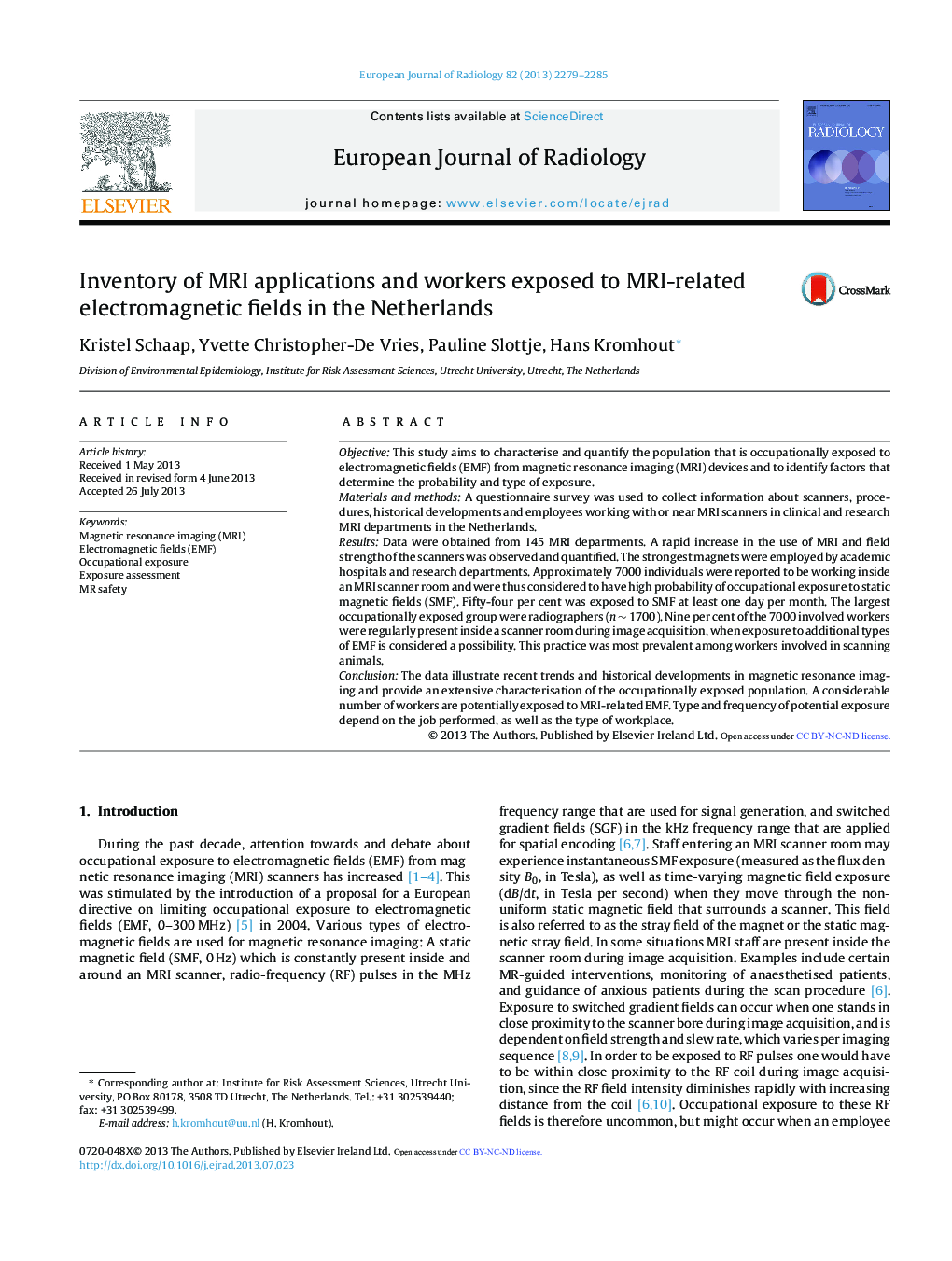| Article ID | Journal | Published Year | Pages | File Type |
|---|---|---|---|---|
| 6244068 | European Journal of Radiology | 2013 | 7 Pages |
ObjectiveThis study aims to characterise and quantify the population that is occupationally exposed to electromagnetic fields (EMF) from magnetic resonance imaging (MRI) devices and to identify factors that determine the probability and type of exposure.Materials and methodsA questionnaire survey was used to collect information about scanners, procedures, historical developments and employees working with or near MRI scanners in clinical and research MRI departments in the Netherlands.ResultsData were obtained from 145 MRI departments. A rapid increase in the use of MRI and field strength of the scanners was observed and quantified. The strongest magnets were employed by academic hospitals and research departments. Approximately 7000 individuals were reported to be working inside an MRI scanner room and were thus considered to have high probability of occupational exposure to static magnetic fields (SMF). Fifty-four per cent was exposed to SMF at least one day per month. The largest occupationally exposed group were radiographers (n â¼Â 1700). Nine per cent of the 7000 involved workers were regularly present inside a scanner room during image acquisition, when exposure to additional types of EMF is considered a possibility. This practice was most prevalent among workers involved in scanning animals.ConclusionThe data illustrate recent trends and historical developments in magnetic resonance imaging and provide an extensive characterisation of the occupationally exposed population. A considerable number of workers are potentially exposed to MRI-related EMF. Type and frequency of potential exposure depend on the job performed, as well as the type of workplace.
